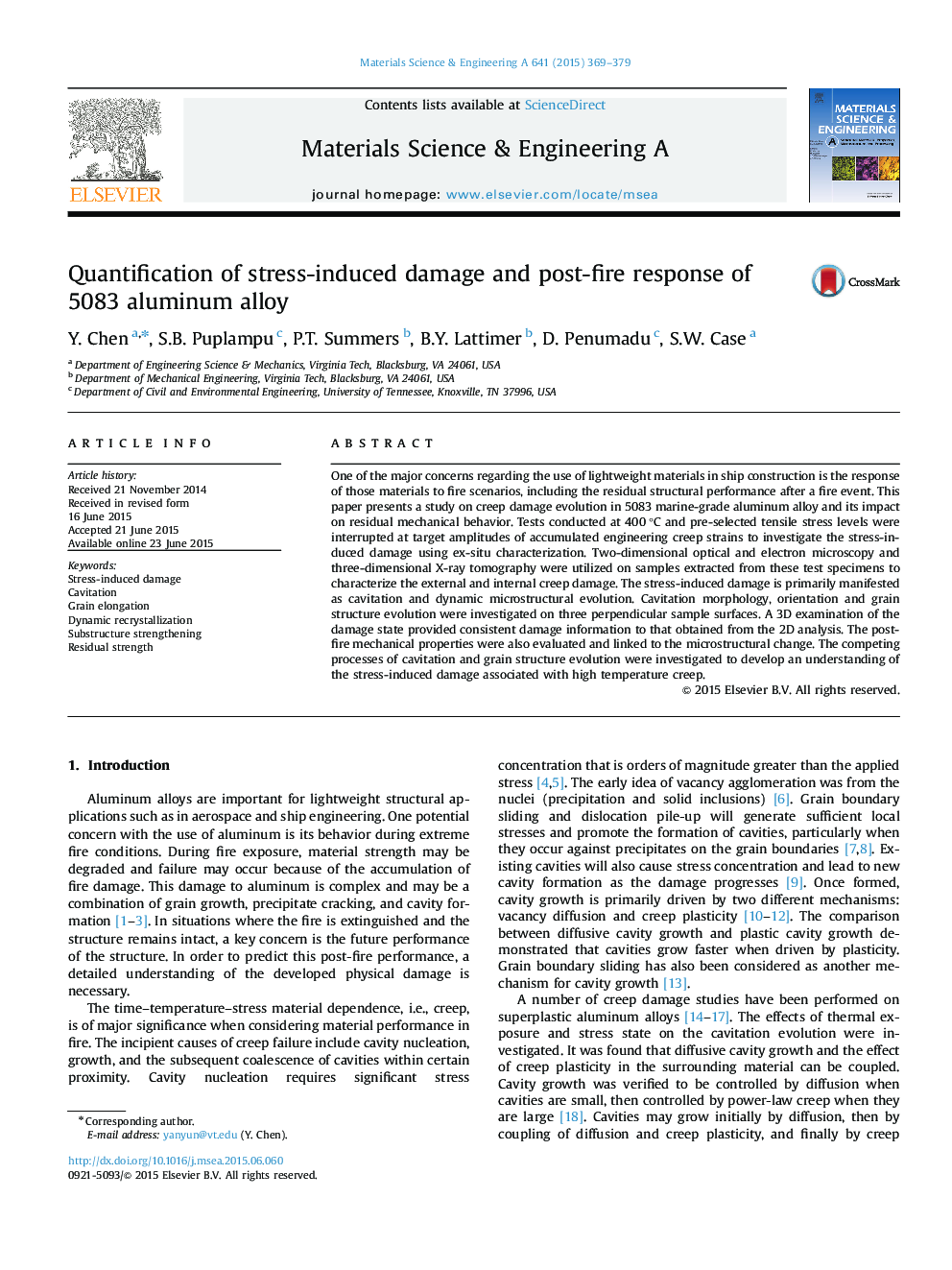| Article ID | Journal | Published Year | Pages | File Type |
|---|---|---|---|---|
| 1574186 | Materials Science and Engineering: A | 2015 | 11 Pages |
Abstract
One of the major concerns regarding the use of lightweight materials in ship construction is the response of those materials to fire scenarios, including the residual structural performance after a fire event. This paper presents a study on creep damage evolution in 5083 marine-grade aluminum alloy and its impact on residual mechanical behavior. Tests conducted at 400 °C and pre-selected tensile stress levels were interrupted at target amplitudes of accumulated engineering creep strains to investigate the stress-induced damage using ex-situ characterization. Two-dimensional optical and electron microscopy and three-dimensional X-ray tomography were utilized on samples extracted from these test specimens to characterize the external and internal creep damage. The stress-induced damage is primarily manifested as cavitation and dynamic microstructural evolution. Cavitation morphology, orientation and grain structure evolution were investigated on three perpendicular sample surfaces. A 3D examination of the damage state provided consistent damage information to that obtained from the 2D analysis. The post-fire mechanical properties were also evaluated and linked to the microstructural change. The competing processes of cavitation and grain structure evolution were investigated to develop an understanding of the stress-induced damage associated with high temperature creep.
Related Topics
Physical Sciences and Engineering
Materials Science
Materials Science (General)
Authors
Y. Chen, S.B. Puplampu, P.T. Summers, B.Y. Lattimer, D. Penumadu, S.W. Case,
